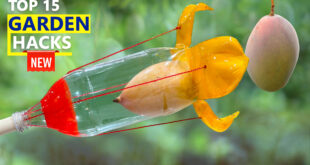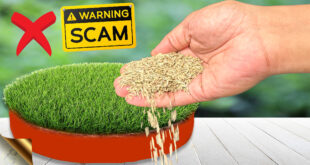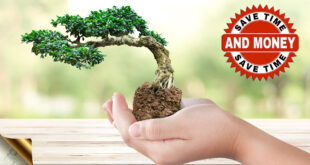Today we will look into a very important topic – thats choosing the right plantar or pot for your container gardening. The advantages and disadvantages of each and some very important factors and tips to consider during pot selection.
I will start with this important line: “The pots really make a difference in the growth of plants”.
Many gardeners have their own preferences regarding the choice of containers for their plants whether clay or plastic or cement pots. If you are confused on how to choose the right container for your home gardening or teres gardening, you’re not alone! There are lot of people out there, who need help in solving this puzzle.
Please watch this entire video and by the end of this video you should be able to make a decision on choosing the correct container for your gardening.
Containers are made of many materials, including clay, cement, ceramic, brass, or fibre-glass, stone pots, wooden pots, coco coir pots and what not.
Just think of these factors one by one and this will help you in making a decision.
- COST
- DURABILITY
- PROS AND CONS OF EACH OPTION – and this will discuss now in detail.
The Pros and cons – that is Advantages and Disadvantages of each option.
Firstly we will start with:
- PLASTIC POTS:
Plastic pots are generally a cheaper option. And they further come in 3 or more options or colors. Choosing a color is also important – You remember one common concept in 7th standard Physics – “BLACK BODIES ARE GOOD ABSORBERS OF HEAT”. They come in terracotta color, light color and black color what most nursery guys use. So black is not my preferred option because it absorbs more heat. If you want, you can use these for plants that prefer indirect light or shade. No issues.
The advantages of these are: They are Cheaper, easily available even in super markets, light weight, durable and do not break easily, easy to clean, easy to make multiple drainage holes, Come in different sizes and shapes and decorative shapes.
Now the Disadvantages: The first one is they get heated up soon when kept in direct sunlight and can kill the beneficial microorganisms in the soil and burn the roots. If you are keeping in indirect light or filtered light – no issues.
One most important problem with plastic is environmental and health hazard – particularly if you are using from an unreliable company. Make sure you use the least toxic ones (#2 HDPE, #4 LDPE, and #5 PP). Try to avoid #3 PVC, #6 PS, and #7 polycarbonate especially for food gardens.
Currently majority of plant pots are made from polypropylene (#5 or PP – currently one of the safer plastics), however it’s better to check than to assume things.
- Cement and Ceramic Pots – These have similar pros and cons:
The advantages of these pots are: They are more visually appealing and come in different sizes and shapes because they can be moulded into any shape and size. They do not break so easily like the clay pots, but still they are breakable unlike plastic pots. Ceramic pots are costly but look very attractive.
The Disadvantages are: They do not provide lateral aeration unlike clay pots because they do not have porosity in the walls and hence they can get heated up and produce bad results if kept in hot sunlight. One more issue with concrete or cement pots most of us are unaware is they can affect soil PH, because concrete is rich in lime and can slowly release into the soil and can make soil more alkaline which can be toxic for most acid loving plants.
Before Moving on to the CLAY POTS, we will quickly look into other options like Wooden Pots, Stone Pots, Styrofoam containers and others.
- Styrofoam boxes –what some people call thermocol boxes are good when they are new and insulate plants well by reflecting heat specially in summer. They are cheap and sometimes you get them free of cost. They are lightweight and durable. The most important and dangerous drawback of these is the polystyrene material hazard because as it gets older, it can degrade and release toxic carcinogenic substances.
- Stone Containers, They are very attractive but are costly, heavy and not easily available and very heavy to lift or shift.
- Wooden Containers are good but if the timber used to make them is from a reliable source or company. Bamboo planters are good and look attractive for small ornamental plants. Wooden containers also provide good insulation to plants from heat. The major draw back is it attracts insects and pests like termites. And also if timber is of bad quality it can start rotting.
- Metallic Pots: They heat up very fast and bad for sun loving plants. Some containers can get rusted and also drilling drainage holes can be tough.
- CLAY POTS: They have the best advantages from plant health perspective – like they are porous and provide excellent drainage from all sides and also lateral aeration. Can be kept in direct sunlight without any issues or damage to the plant roots. The only disadvantage of these pots is they are very fragile and can break easily.
- GROW BAGS: A relatively new concept home gardening. They are available in various sizes and are very cheap. They are light weight and ideal for teres gardening. Most reliable ones are UV resistant and safe. The problem is they don’t look much attractive.
So there we have it folks. By now you should have decided your favourite container for home gardening.
 GKVKs – Gardening Tips and Store Gardening Tips and Store
GKVKs – Gardening Tips and Store Gardening Tips and Store



